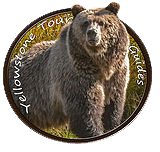A Guide To Preserving Yellowstone Park
A Guide To Preserving Yellowstone Park
America’s first national park, Yellowstone is known around the world for its geysers, wildlife and pristine lodgepole pine forests. But this magnificent place is fragile and needs your help to thrive!
Protect The Water
Water is key to the health of Yellowstone’s awe-inspiring landscapes, fisheries and wildlife. It drives complex geothermal features, fuels the world’s largest collection of geysers and mudpots, and helps drive tourism that generates millions of dollars in revenue each year. The waters that support these natural ecosystems are fragile and can be threatened by pollution, climate change, invasive species and other human activities. Protecting lakes and rivers within Yellowstone Park is essential to preserving the unique biodiversity that makes these waters special. As a result, it is vital for conservation organizations and businesses in Greater Yellowstone to join forces and advocate for a game plan that embraces how healthy environments support healthy economies. The result would be a stronger, more resilient region that is less vulnerable to economic pressures and other threats, and better able to preserve its unique and abundant diversity of wildlife.
Protect The Forests
One of the most important aspects of preserving Yellowstone Park is to protect its forests. Forests make up 80% of the park’s landscape and are critical to Yellowstone’s ecosystem health. The forest in Yellowstone Park is a complex mixture of species that work together to support each other and the ecosystem as a whole. This is a complicated balance that needs to be maintained. Fire plays a key role in this process. It thins out smaller trees, brush and increases the decay of dead wood which provides nutrients for soil and plants. To help preserve this complex ecosystem, the park uses a policy of natural fires, allowing wildfires to burn when they’re not threatening people or parks and facilities. This is especially important in the high elevations of the park where species like whitebark pine are more susceptible to climate change and invasive diseases. If you’re interested in helping preserve the forests in Yellowstone Park, you can start by donating to conservation groups that specialize in habitat protection. There are many organizations out there that need your help.
Protect The Wildlife
Whether you’re visiting Yellowstone Park for a day or weeks, there are plenty of ways you can help to preserve the wildlife in this beautiful natural treasure. But it starts with treating the park – and its forests, hydrothermal features and wildlife – with respect. The Greater Yellowstone Ecosystem is one of the largest remaining nearly intact temperate-zone ecosystems in the world, yet it is under severe pressure from human development, climate change and wildlife migration corridors. As a result, the region is at risk of losing its healthy and diverse wildlife populations and their unique habitats. The first step in protecting Greater Yellowstone’s wildlife is to protect its migration corridors. These pathways connect and enable animals to travel from public lands to private land and back again. By partnering with private landowners, states and other stakeholders, PERC is working to ensure the health of these critical corridors so that they can support healthy, thriving and resilient wildlife.
Protect The Geothermal Features
Yellowstone Park boasts the world’s most diverse and intact collection of geysers, hot springs, mud pots, and fumaroles. The thermal features in the Park represent the results of millions of years of volcanic activity. Most of Yellowstone lies in a volcanic caldera that formed more than 600,000 years ago, during a period of volcanic activity called the “Yellowstone hotspot.” Here in northwestern Wyoming, the crust is thin enough for heat generated by the Earth’s molten core to make its way to the surface. The heat causes groundwater to become heated and bubble up through a variety of geothermal features. These include geysers (hot springs with restricted “plumbing” that creates pressure—vent on their own timetable), mud pots, and fumaroles. When hydrothermal fluids rise to the surface, they mix with colder groundwaters and leave behind siliceous (SiO2) sinter or calcareous (CaCO3) travertine. These travertine terraces are a particularly aesthetic creation of Yellowstone’s hydrothermal activity, accented by streaks of color from thermophiles living on their surface.
